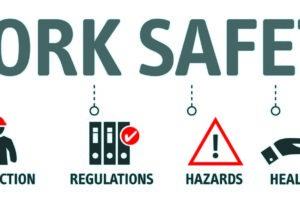
Key elements of Health & Safety Management System
A Health and Safety Management System (HSMS) is a set of processes and procedures that help an organization manage its health and safety risks. It can be used to identify, assess, control, and monitor health and safety risks. A Health and Safety Management System can be designed to meet an organisation’s specific needs. It should consider the organization’s size, type of business, and the nature of its work. This blog post will discuss the key elements of a Health and Safety Management System and how it can benefit your business.
Most of the key elements required for effective health and safety management are similar to those required for good quality, finance, and general business management. Commercially successful organizations usually have good health and safety management systems in place. Good and effective management principles provide a sound basis for improving health and safety performance.
When it comes to health and safety management systems, there are several benefits that businesses can reap.
For instance, an effective health and safety management system can help businesses to:
- Minimize the risks of workplace accidents and injuries
- Comply with relevant health and safety laws and regulations
- Improve employee morale and motivation
- Enhance the company’s image and reputation
- Reduce workers’ compensation costs
As you can see, there are several reasons why businesses should implement an effective health and safety management system.
Why Safety Management System Is Important?
There are many good reasons for having a safety management system in place within your organisation. A well-run safety management system can improve efficiency, communication, and coordination amongst employees, as well as reduce the potential for workplace accidents and injuries.
An effective safety management system will also help to ensure that your workplace complies with relevant health and safety legislation. This can save your organisation time and money in the long run and prevent potential legal action against your business. In short, a safety management system is an essential part of any well-run organisation. If you don’t have one in place already, now is the time to put one together.
There are a number of different elements that you should include in your safety management system. First and foremost, you need to have clear policies and procedures in place regarding health and safety in the workplace. These should be communicated to all employees and regularly reviewed and updated as necessary.
You also need to ensure that you have adequate resources in place to implement your safety policies and procedures. This includes things like first aid kits, fire extinguishers, and health and safety signs. Finally, you need to ensure that you have a system for reporting accidents and incidents. This will help you identify any potential workplace hazards and take steps to address them.
By putting together a comprehensive safety management system, you can help to create a safer workplace for everyone. It’s an investment that will pay off in the long run, both in terms of preventing accidents and injuries and in terms of compliance with health and safety legislation.
If you’re not sure where to start when putting together a safety management system, plenty of resources are available online and in print. Alternatively, you could speak to a health and safety consultant who can help you develop a system that meets your organisation’s specific needs.
Elements Of Health And Safety Management System
The HSE document HSG65, Managing for health and safety, describes the occupational health and safety management system used extensively in the UK.
In 2013, the HSE’s guidance in HSG65 moved from using the POPMAR model (Policy, Organising, Planning, Measuring performance, Auditing, and Review) to a ‘Plan, Do Check, Act’ approach.
The HSE has argued that the move toward the Plan, Do Check, Act achieves a better balance between management’s systems and behavioral aspects. It also generally treats health and safety management as an integral part of good management rather than a standalone system. A description of this four-step approach to occupational health and safety management is:
- PLAN – Establish health and safety management standards based on risk assessment and legal requirements.
- DO – Implement plans to achieve objectives and standards.
- CHECK – Measure progress with plans and compliance with standards.
- ACT – Review against objectives and standards and take appropriate action.
The Plan, Do Check, Act model for occupational health and safety management also forms the basis of the two occupational health and safety management systems: OHSAS 18001 and ILO-OSH 2001.
All recognized occupational health and safety management systems, including HSG65, have some basic and common elements. These are:
- A planning phase;
- A performance phase;
- A performance assessment phase; and
- A performance improvement phase.


